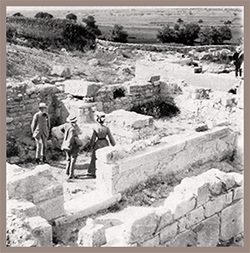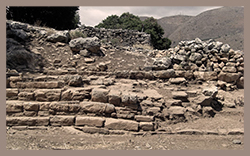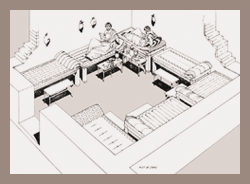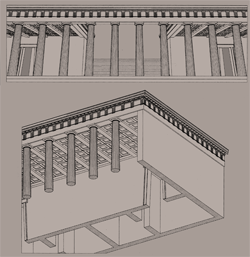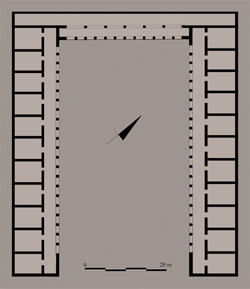download article as .pdf: Lo hestiatorion dell’Asklepieion di Kos
.
This paper resumes the text of the IV mimiamb of Herodas, which, set at the Asklepieion of Kos, tells of the visit at the sanctuary of two women and their sacrifice of a cock to the god. In his tale the poet describes the monuments and works of art encountered and admired by the characters, description that has been widely studied and analyzed especially with regard to the altar, with the statues made by the sons of Praxiteles, and the famous paintings on the walls of the pronaos of the temple. So far, however, no scholar has focused on the last verses of the poem, in which, after the sacrifice of the cock, the two women purposed to go and eat their meal in the nearby oikoi. Taking inspiration from the text of Herodas, the article will confirm the destination as a ritual banquet hall of the building immediately to the south of the temple, the so-called “building D”, generally known as abaton; towards it, in fact, the two women may have gone after sacrifice to eat their meal.

